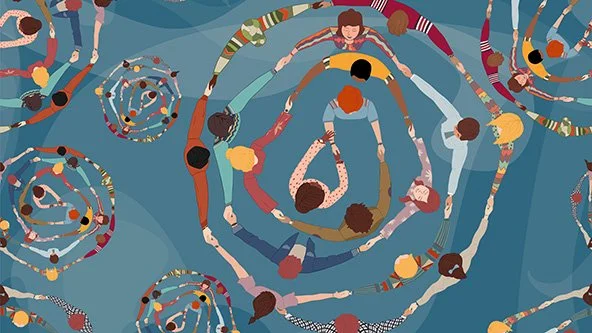Check out this great summary of current systems thinking around healing trauma by Laura Calderon de la Barca, Katherine Milligan & John Kania in the February 2024 Stanford Social Innovation Review. My favorite two paragraphs, plus two quotes about how to use old ideas in new ways.
collective wounds require collective healing, and
draw on ancient wisdom (the religion major in me loves that).
Collective Wounds Require Collective Healing
Seeing trauma through a systems lens shines a light on an obvious truth: The collective dimension of trauma requires a collective context for healing. In much of the Western world, there’s an assumption that trauma healing should happen individually and in private, such as in a psychologist’s office. And while therapy is absolutely appropriate in some circumstances, it’s insufficient for healing from collective wounds.
Draw on Ancient Wisdom
Many of the healing practices articulated here are ancient, in that they draw on traditions communities have practiced for thousands of years, but they are relatively new in the context of social change. To truly transform systems, we must apply a trauma lens to the conditions that hold problems in place, take a healing-centered perspective, and explore experiences that can create collective healing. Through pursuing this path, society can connect to our deepest shared humanity, and access our full creative potential to address social and environmental problems.
“Old ideas can sometimes use new buildings. New ideas must use old buildings.”
“We don’t need men with new ideas as much as we need men who will put energy behind the old ideas.”
Thanks Jeff Bradach for bringing this to my feed. And thanks to Amy Elizabeth Fox and Mobius Executive Leadership for deepening my knowledge of this critical area.




